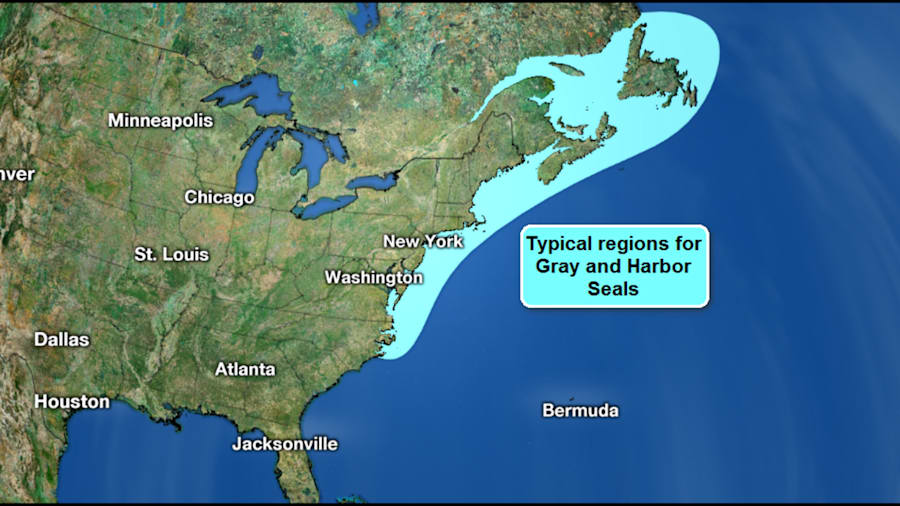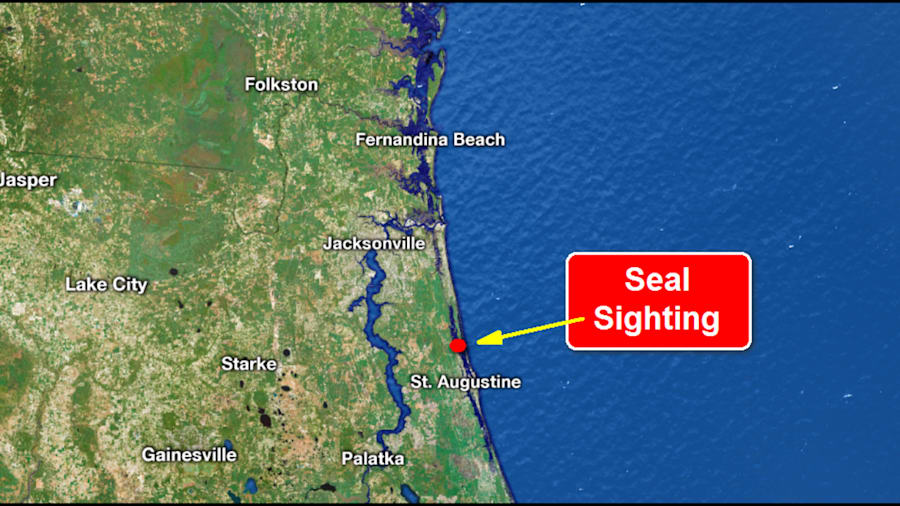PONTE VEDRA BEACH, Fla – This is a developing story check back for further updates.
Deedo Nelson was heading out to do some pre-fishing before a Feb. 24 tournament, looking for redfish. He left out of St. Augustine and went northward into the Guana Tolomato Matanzas National Estuarine Research Reserve.
"I saw something larger enter the water about 100 yards ahead of me. Thinking it was an alligator, as I got closer, I noticed its head and then thought it was an otter. I had never seen an otter in salt water so I became interested. Then I saw how big the head was and I knew it had to be a seal. I stayed around it for about 20 minutes, and then went up on the shore to confirm what I was thinking."
Deedo then called FWC (Florida Wildlife Commission). They first told him he was looking at an otter, and there was no way it was a seal. Deedo knew better.
WATCH: Wayward seal spotted in NE Florida
FWC arrived on Friday to try to locate the seal, in hopes to tag the seal with a satellite tag for tracking purposes. They suspect the uptick in boat traffic over the weekend may have spooked the seal. They were unable to spot the wayward seal this weekend and today's search has been called off due to bad weather.
The FWC speculated the seal could have been in our local waters for up to two weeks, and from the photos and reports appears to be a healthy juvenile harbor seal, weighing in just under 200 lbs. Mature Harbor Seals can weigh up to 300-375lbs.
If you happen to spot the seal, the FWC would like to know please call 1-888-404-3922. They will rely heavily on the public's help to locate the seal moving forward.
If the FWC is able to locate the seal, they hope to tag it for tracking purposes and bring it to the Sea World facility to run a few tests to ensure it is healthy. The next step would be to turn it over to NOAA who would safely return the seal to its natural environment- back to the colder waters of the North Atlantic.
Here's more on what may have happened.
January was abnormally cold. Instead of stopping along the Outer Banks of North Carolina, the seal, which does migrate south for the winter, may have just kept going. The seal was likely looking for warmer water and never found any until it reached Northeast Florida.
You might recall that during the extreme cold snap we experienced back in January, our coastal water temperatures dropped into the upper 40s, which is fairly rare for us.



The FWC says this isn't the first time a seal has ended up in Florida from up North. In 2014, NBC 6 South Florida reported in this article, the FWC and Palm Beach Sheriffs' office found an unhealthy harbor seal in the Palm Beach Inlet. The seal was taken to Sea World for treatment, where it later died.
In 2004, the Herald Tribune reported in this article, that a 40 pound harbor seal beached himself on New Smyrna Beach. He was nicknamed Sunny and taken to recover at the Sea World facility. The article goes on to describe that our normal warmth is too hot for harbor seals to thrive, and speculated the seal possibly got caught up in the Gulf Stream and ended up in the sunshine state.
Harbor Seals
Sea World offers some fun facts about Harbor seals
- Harbor seals belong to the scientific order Pinnipedia, which includes seals, sea lions, and walruses. Seals differ from sea lions in a number of ways, including having shorter, stouter flippers, and no visible earflaps.
- Unlike most other pinnipeds, harbor seals are generally solitary and rarely interact with one another. An exception to this is the strong mother-pup bond maintained until the pup is weaned. When hauled out, adults maintain a meter or more (several feet) between them. Harbor seals are not highly communicative, but if threatened a seal may respond by snorting, growling, lunging, scratching, or other aggressive gestures.
- Harbor seals swim with alternate back-and-forth movements of their hind flippers. Harbor seals can remain submerged for up to 28 minutes and dive to depths of 295 ft.; however, they routinely forage in shallower waters.
- Harbor seals along the Pacific coast usually give birth between February and July. The well-developed pup may measure up to 39 in. and 26 lb. A pup nurses for four to six weeks. Its mother's milk, containing as much as 45% milk fat, enables the pup to more than double its weight by the time it's weaned.
Fore more information about harbor seals, here's a link to Sea World's Animal Info Book on Harbor Seals
History of seals in Florida
According to NOAA, a type of seal used to be widespread in South Florida, the Caribbean Monk seal. The seals were large, growing up to 8 feet and weighing between 375-600lbs. The seals were hunted aggressively when Spanish explorers arrived for their fur hides, meat, and the oil from their bodies. The species is now extinct, with the last Caribbean Monk Seal sighting was in the early 1950s.




